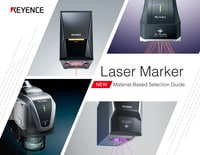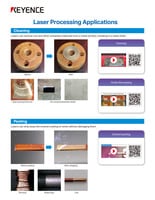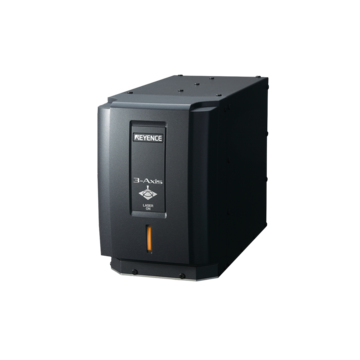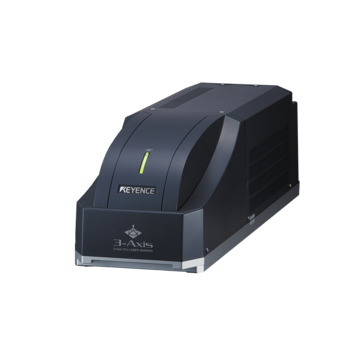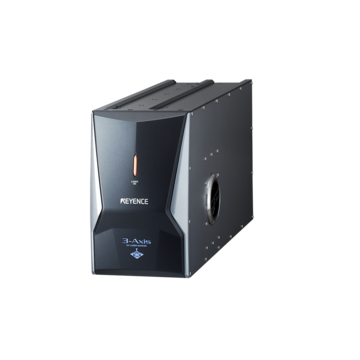Laser Marking Systems / Laser Markers
Fiber vs. CO2 vs. UV: Which Laser Marker Should I Choose?
-
Tags:
- Laser Marking , Laser Etching , Laser Cleaning
Lasers can mark and process a wide variety of products, but there's no one-size-fits-all answer for every application. Fiber, CO2 and UV laser markers perform differently depending on the application and material.
Here's a brief overview of Fiber, CO2 and UV laser technology. We've also included some sample marking videos that highlight the strengths and weaknesses of each system.
Fiber, CO2 and UV Laser Basics
The most important difference between Fiber, CO2 and UV laser markers is the wavelength of light they produce.
Short wavelengths typically have more energy and a higher absorption rate than long wavelengths. As a result, a laser's wavelength affects its ability to mark certain materials.
The features of and marking examples for the different wavelength types are introduced below.

Light wavelength distribution map
* More Fiber vs. CO2 vs. UV comparison videos towards the bottom.
We’re here to provide you with more details.
Reach out today!

What are Fiber Lasers?
Fiber lasers have a 1090 nm wavelength, making them IR (infrared) lasers. Fiber lasers can mark a wide range of materials, though they are optimized for metal marking applications. Their high power makes them perfect for annealing and engraving applications, but they cannot mark transparent objects since IR light passes straight through.

Light wavelength distribution map
Engraving (Painting After Marking)
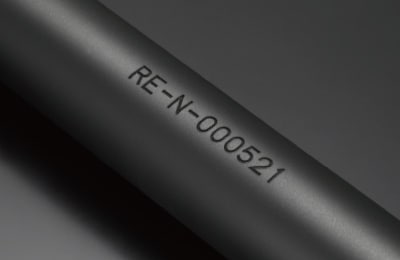
Vehicle body frame
Black-Annealed Marking
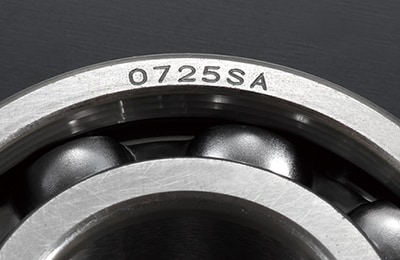
Bearing
High-Speed 2D Code Marking
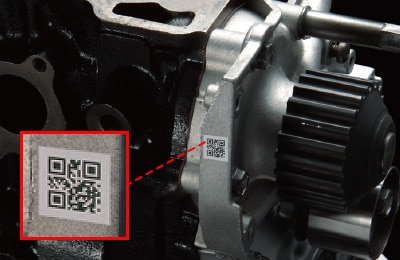
Engine block
Etching

Key cylinder
Laser Cutting
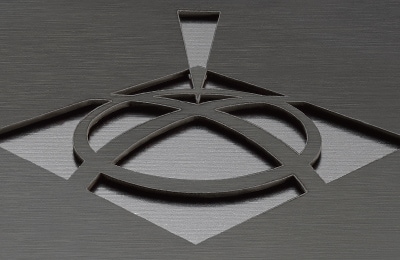
Aluminum board
Burr Removal
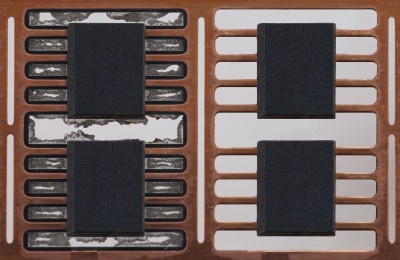
Frame IC
Get detailed information on our products by downloading our catalog.
View Catalog

What are CO2 Lasers?

Light wavelength distribution map

Cartons
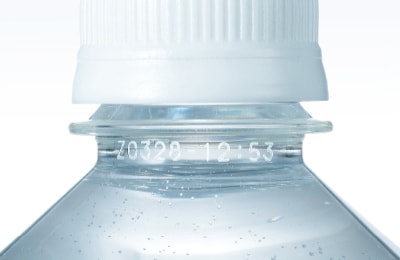
Bottles

Design marking
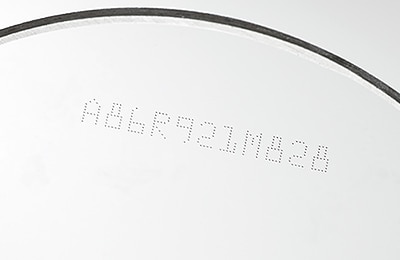
Glass wafers
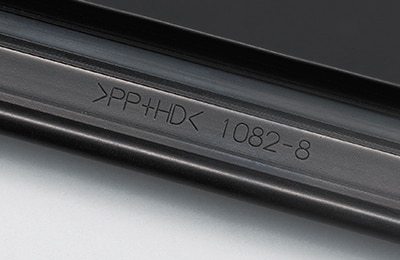
Weatherstripping
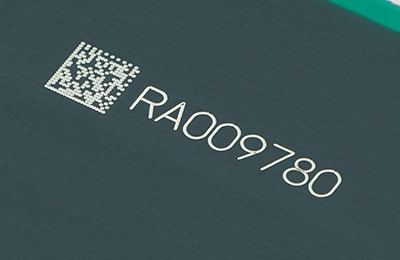
Electronic PCBs
Get detailed information on our products by downloading our catalog.
View Catalog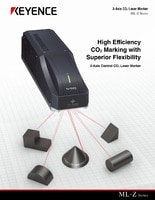

What are UV Lasers?
UV lasers use a highly absorbable wavelength (355 nm) to mark parts. This high absorption rate allows UV lasers to perform "cold marking" (i.e. marking without extra heat stress). As a result, UV lasers are ideal for applications that require high-contrast or minimal product damage.

Light wavelength distribution map
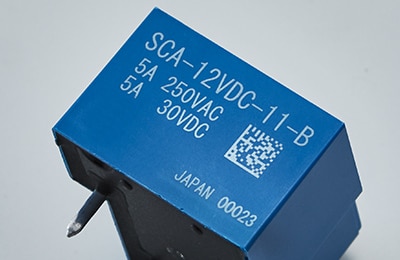
Multicolor automotive relays

Earbuds

Chemical bottles

Copper lead frames

Steel tools (scissors, etc.)

Food packaging film
Get detailed information on our products by downloading our catalog.
View Catalog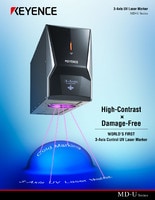

Fiber, CO2, and UV Laser Marking Comparison
These videos compare Fiber, CO2 and UV laser marks on different materials.
Fiber vs. CO2 vs. UV Marking on Metal (Iron)
- Fiber Laser: Highly visible marking is possible
- CO2 Laser: Marking isn't possible because iron doesn't absorb CO2 laser light
- UV Laser: Damage-free marking is possible but the contrast is low (compared to the fiber laser mark)
Fiber vs. CO2 vs. UV Marking on Metal (Copper)
- Fiber Laser: Marking may not be possible because copper is highly reflective and doesn't easily absorb Fiber laser light
- CO2 Laser: Marking isn't possible because copper doesn't absorb CO2 laser light
- UV Laser: High-contrast, damage-free marking is possible because copper easily absorbs UV laser light
Fiber vs. CO2 vs. UV Marking on Resin (PE)
- Fiber Laser: Fiber laser light reacts with the pigments in the resin to produce high-contrast marks
- CO2 Laser: CO2 laser light creates non-contrast marks and causes the resin's surface to swell
- UV Laser: UV laser light reacts with the pigments in the resin to produce high-contrast, damage-free marks
Fiber vs. CO2 vs. UV Marking on Cartons
- Fiber Laser: Marking isn't possible because the carton doesn't absorb Fiber laser light
- CO2 Laser: CO2 laser light burns the surface of the carton to produce marks
- UV Laser: The paper on the carton absorbs UV laser light, resulting in high-contrast marks
Fiber vs. CO2 vs. UV Marking on Transparent Targets (POM)
- Fiber Laser: Marking isn't possible because clear plastic doesn't absorb Fiber laser light
- CO2 Laser: CO2 light uses heat to produce marks
- UV Laser: Marking may not be possible because clear plastic (POM) doesn't absorb enough UV laser light
Fiber vs. CO2 vs. UV Marking on Pouches
- Fiber Laser: Fiber laser light is not easily absorbed and damages the pouch
- CO2 Laser: CO2 laser light creates marks by burning off the pouch's surface
- UV Laser: UV laser light reacts with the film on top of the pouch to produce high-contrast, damage-free marks
Final Marking Results
Fiber lasers can quickly mark the widest range of materials and typically produce the most contrast on metals. However, fiber lasers cannot mark transparent materials and will sometimes damage the marking surface.
UV lasers provide the most contrast on resins. UV lasers have the added benefit of creating damage-free marks.
CO2 lasers burn the target with heat, making them ideal for marking wood, paper, ceramic and transparent targets.
| Fiber Laser | CO2 Laser | UV Laser | |
|---|---|---|---|
|
Metal (Iron)
|
Fiber Laser
High visibility
|
CO2 Laser
Low visibility
|
UV Laser
Low visibility
|
|
Metal (Copper)
|
Fiber Laser
Low visibility
|
CO2 Laser
Low visibility
|
UV Laser
High visibility
|
|
Resin (PE)
|
Fiber Laser
High visibility
|
CO2 Laser
Low visibility
|
UV Laser
High visibility
|
|
Cartons
|
Fiber Laser
Low visibility
|
CO2 Laser
High visibility
|
UV Laser
High visibility
|
|
Transparent Targets
|
Fiber Laser
Low visibility
|
CO2 Laser
High visibility
|
UV Laser
Low visibility
|
|
Pouches
|
Fiber Laser
Low visibility
|
CO2 Laser
Low visibility
|
UV Laser
High visibility
|
* Results may vary depending on the material and its status. The above results only represent an example.
Discover more about this product.
Click here to book your demo.

Applications of Fiber, CO2, and UV Laser Markers in Different Industries
Laser marking, whether it is fiber laser vs CO2 or UV-driven, is used widely for many applications. Each has its own advantages depending on the material and production needs. Fiber lasers, for example, are ideal for marking on metals in the automotive industry, such as engraving serial numbers on engine parts or for deep marking aerospace components like titanium bolts. Electronic manufacturers use them as well to mark circuit boards and metal connectors.
CO2 lasers excel at coding expiration dates on food packaging, engraving branding on glass beverage bottles, or cutting intricate designs into wooden furniture. UV lasers are ideal for producing high-contrast markings on silicon wafers used in electronics manufacturing, engraving precise codes on medical devices without causing damage to plastic surfaces, and marking logos on cosmetic containers.
We’re here to provide you with more details.
Reach out today!

How to Choose Between Fiber Laser vs CO2 vs UV for Your Production Line
When selecting between a UV, fiber laser vs CO2 laser for your production line, the material type, required marking speed, and operational needs should be considered. Fiber laser machines use higher average powers and have powerful marking capabilities, making them ideal for metal and industrial applications. Being that these systems offer high-speed, deep engraving, achieving long-lasting results is possible.
On the other hand, CO2 lasers have a longer wavelength. Cutting and engraving non-metallic, organic materials such as glass, acrylic, and textiles is simplified, making them ideal for packaging and consumer goods industries. UV laser systems, however, use short-wavelength light. When high-precision marking is required on delicate materials like plastics, semiconductors, and medical devices, UV lasers are often a wise choice. No heat-related damage occurs to sensitive surfaces which may happen with other laser marking methods.
The good news is that regardless of your materials and industry requirements, there is a right-fit laser type available. Choosing the correct equipment optimizes production line efficiency, reducing downtime and speeding up operations.
Curious about our pricing?
Click here to find out more.

Making the Best Choice Between Fiber, CO2, and UV Lasers for Your Manufacturing Needs
Every manufacturing environment is unique in its own right. Deciding between a fiber laser vs CO2 or UV lasers depends on understanding your manufacturing process, material requirements, and desired output quality. Facility layout, employee safety, and operational efficiency may influence decisions on what laser marking equipment works best. Fiber lasers, as an example, may require less maintenance and downtime, reducing strain on employees who are busy with other tasks.
CO2 lasers, which can be bulkier, might need specific space considerations, ensuring both the facility and workforce can handle the equipment’s demands. UV lasers, with their precision and minimal heat, may be favored in environments where sensitive materials and worker safety are prioritized. Manufacturing includes many moving parts. By carefully weighing these factors, you can smoothly integrate new equipment and improve overall productivity.
When the question comes up of whether fiber vs. CO2 laser or UV laser is best, we understand that you still may have questions. KEYENCE offers a versatile range of laser markers designed to meet your specific needs. Contact us today to speak with a specialist or receive a product demo.
We’re here to provide you with more details.
Reach out today!

Related Downloads
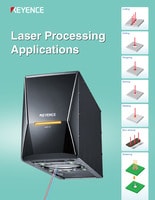
This booklet covers a wide range of laser processing techniques - such as cutting, drilling, and deep engraving - as well as welding and soldering that are unique to lasers.

2D codes are used to store date codes, lot codes, serial numbers, and more. Users who are considering 2D code marking should read this laser marking guidebook.


